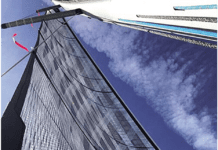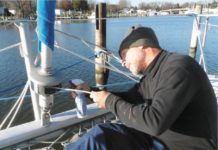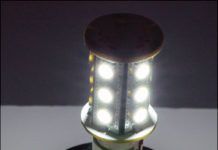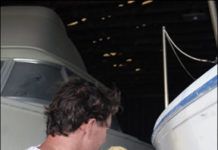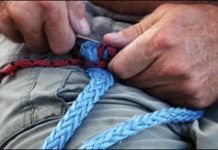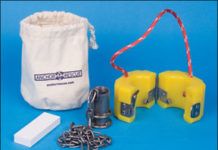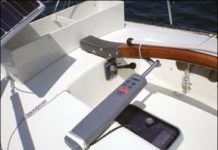Practical Sailor Tracks Down the Best LED Tri-color Light
Practical Sailor found that the full brightness that LEDs offer, coupled with a huge energy savings, a wide tolerance to voltage changes, and a very long expected lifespan, make LED a great alternative to incandescent lights for masthead tri-color. The tradeoff is the considerable heft of the price tag. Practical Sailor tested LED tri-color lanterns from Orca Green Marine (OGM), Signal Mate, and Lopolight. We also evaluated LED tricolor bulbs designed to replace those in the popular Aqua Signal Series 40 tri-color light. Those were bulbs from Lunasea, Dr. LED, and LED Shop.
Good Lookin Leica
Sight is the mariners most important sense, and tools that enhance visual acuity can be worth their weight in gold. Leicas newest addition to its line of premium-priced, high-quality optics delivers brilliant viewing-and at $2,200 costs nearly its weight in gold-but for the sailor preferring an uncompromising pair of binoculars, the German-made Ultravid 7x42 HD is a navigators dream. Although they lack a compass, they do afford camera-lens quality resolution and their low-light gathering ability is truly astounding. The ergonomic two finger-focus adjuster, water-tight armored coating, and extendable eye cups round out their superior design.
Mailport: 12/09
I have a Pearson Ensign 1962 now at a slip in New Rochelle, N.Y. This season marked the first time we had the luxury of keeping our boat at a slip. In order to maneuver through the marinas byways without worrying, I bought a 24-volt Minn Kota outboard (80 pounds of thrust) and two 12-volt batteries, which I hook up in series. Not only am I able to stop start, turn, etc., in the marina, but-to my surprise-in the calm sound water, I can nip along at about 3-4 mph with myself, two crew, and the 3,000-pound boat. The result is that Ive only used my 5-horsepower Mercury outboard once this year. My electric outboard doesn't stall; it has variable speed like no ones business; reverses with relative ease, and is less expensive-though more cluttered-than the self-contained electric outboards you recently reviewed. Am I part of a growing trend or just weird? If the former then it might be worthwhile testing electric outboards for boats my size (22.5 feet) and commenting on their applicability.
Testers Take Tacktick and Nexus Wind Instruments for a Spin
Practical Sailor testers compared Tackticks improved Race Master system to the Nexus Start Pack 3, a hybrid wired/wireless system. The Tacktick Micronet wireless wind instrument, a compact system featuring wireless display and a masthead sensor, has a strong following among racers. It has proven to be a good choice for those sailors serious about improving race performance as it has many options for tracking performance on the course in real time. Its ability to work with a 12-volt system makes it a good choice for small boats. The versatile, expandable Nexus hybrid has an impressive and intuitive interface and a graphic analog wind representation. It provides all of the basic functions a cruiser or racer uses most, and testers found the analog wind display appealing.
Shop-to-Go
It probably comes as no surprise to our readers that Practical Sailor editors are serious gadget junkies. Our jobs feed our habits with a steady supply of gear to play with, disassemble, and subject to mild abuse. The latest product to evoke the "kid in the candy store" reaction from our staff was the Power8workshop Delux. Powertools, in particular, hold a special place in our hearts, and this was a whole box of cordless powertools, neatly kitted in a plastic and stainless carrying case, promising workshop capability anywhere with space enough to put the 23-by-12-by-16-inch setup.
Gripping Hitches for Loaded Lines
Testers evaluated five different knots to determine which would be the ideal for holding a tensioned line. Testers considered ease of tying and untying, ease of learning and recall, and holding power with various types of line. The old standard rolling hitch was pitted against the modified rolling hitch, icicle hitch, gripper hitch, and sailors hitch.
Ground Tackle
As Practical Sailor prepares for a new round of anchor tests, weve been on the hunt for new anchors, as well as new accessories. One of the most interesting devices to come our way is the Anchor Rescue developed by Richard Provonchee, a sailor and principal in Boxer Marine Inc., based in Cushing, Maine. The most common complaint about anchors is their lack of holding, but an anchor that refuses to budge-can also have serious consequences. The Anchor Rescue uses an innovative two-part system to free fouled anchors. The typical antidote to fouling is to attach a buoyed line to the anchor crown so that it can be hauled backward out of its snag. Most anchors have an eye at the crown for attaching a buoyed retrieval line. (Danforth-style anchors are an exception).
Crossing Over
When it comes to gear for the outdoor enthusiast, there are a lot of crossover products. Hikers, bikers, boaters, backpackers, and climbers share a need for lightweight, durable, and practical equipment. So as Practical Sailor editors geared up for our summer adventures, we looked for products that could serve double-duty on the boat and on the trail.
Feature-loaded High-end Marine Handheld VHF Radios
Practical Sailor tested eight high-end marine handheld VHFs from three manufacturers: Cobra, Standard Horizon, and Uniden. Among those tested were two updated Standard Horizon VHFs, the HX500S-LI and HX600S-LI, and three of the companys latest floating VHF radios, the HX750S, HX760S, and HX850S. From Uniden, testers evaluated the MHS450 and MHS550. They also tested the Cobra HH425 LI. These feature-rich handheld marine radios, priced from $130 to $350, were tested for transmitter power, frequency accuracy, frequency stability, receiver sensitivity, audio output, and audio quality. They also were submerged in fresh water, dropped from 4 feet onto concrete and batteries were left on for 15 hours to test battery life.
Practical Sailor Tillerpilot Test: the Simrad TP10 and the Raymarine ST1000 Plus
Offshore sailor Skip Allan tested two entry-level tillerpilots, the Simrad TP10 and Raymarine ST1000, aboard his 27-foot sloop during last years Singlehanded Trans-Pac race. The autopilots were used during varying weather conditions and sea states, including gale conditions. The review considers characteristics of the Raymarine tillerpilot and Simrad tillerpilot, including price, power supply, drive thrust, installation ease, user friendliness, construction, and performance.













